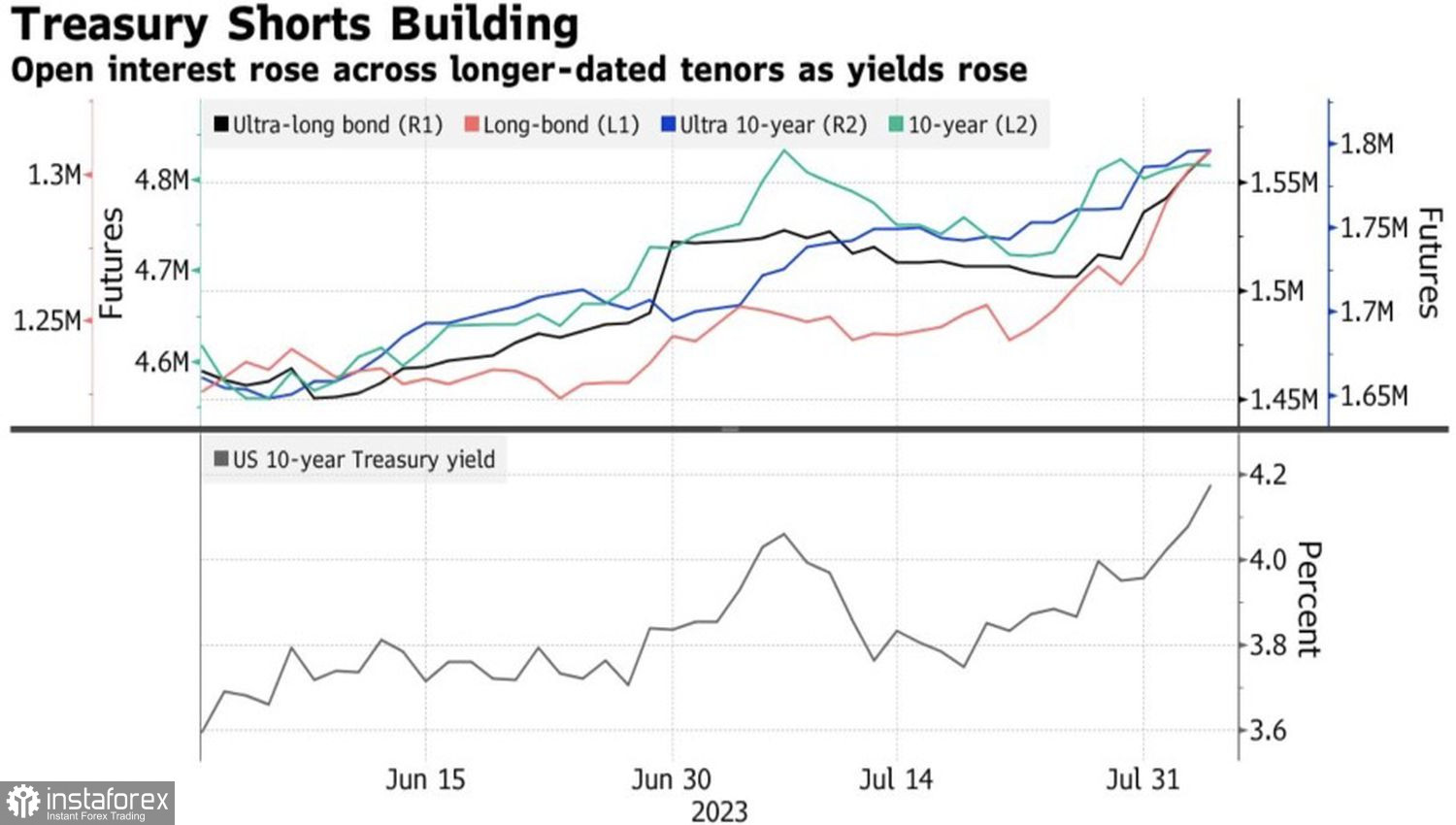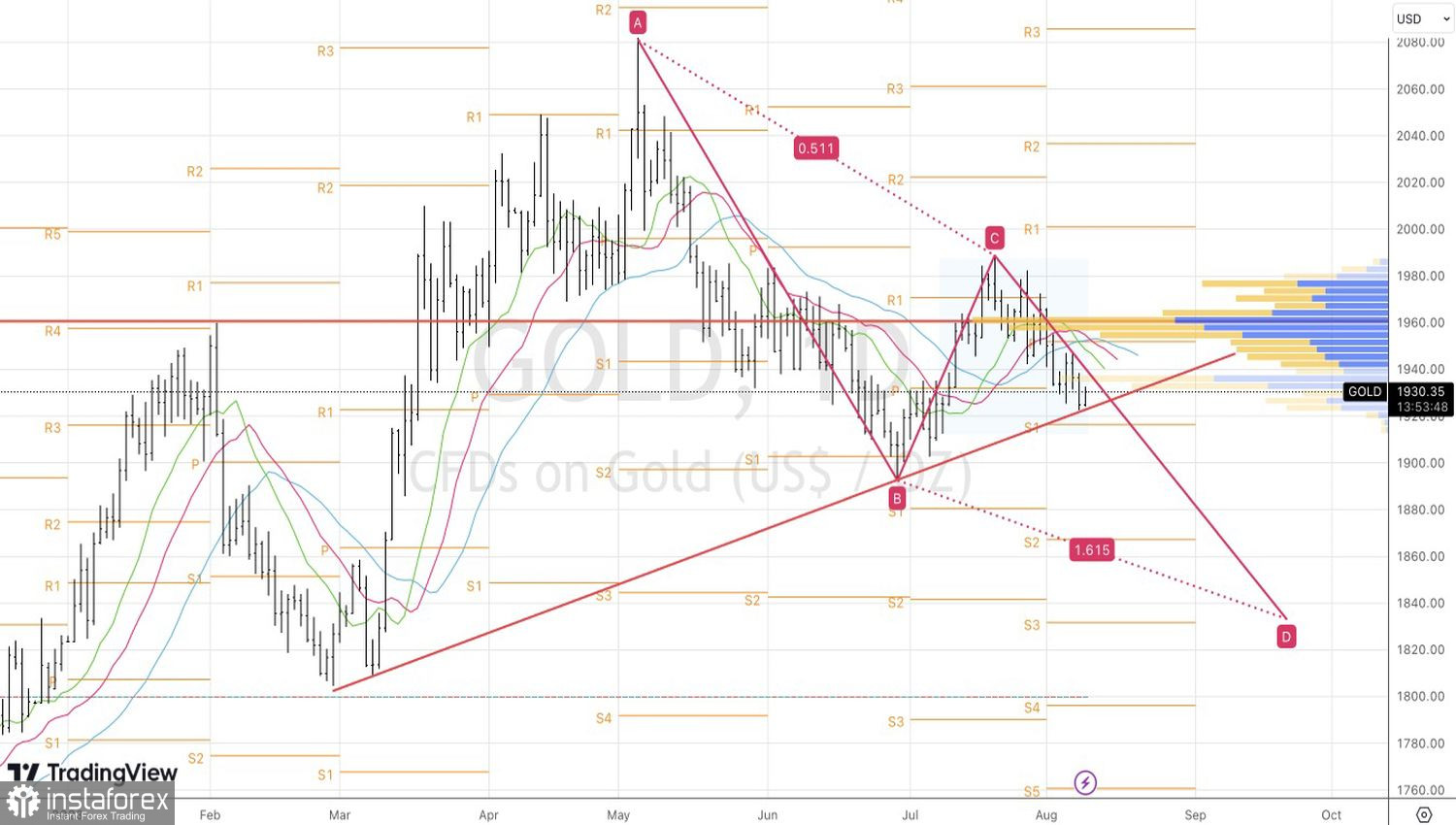The downgrade of the credit ratings of ten American banks by Moody's allowed gold to take a brief respite. Investors immediately recalled the banking crisis in the U.S., which led to a surge in XAU/USD quotes to historical highs due to fears of an impending recession. Currently, markets are increasingly discussing a soft landing, putting significant pressure on the precious metal.
Gold shines when the Federal Reserve abundantly feeds the U.S. economy with cheap liquidity, softening monetary policy. This was the case during the peak of the pandemic when it set a new record. Expectations of a dovish pivot supported XAU/USD bulls in April–May. However, by August, the external environment has changed significantly. The Federal Reserve will either increase borrowing costs to 5.75% once again or keep rates flat until March 2024. This, combined with expectations that the U.S. economy will avoid a downturn, or the recession will be practically unnoticed, leads to an increase in the yield of U.S. Treasury securities.
Gold is viewed as an alternative to securities. It cannot compete with stocks during a "Goldilocks" economy or with bonds during a yield rally. Meanwhile, hedge funds actively increasing short positions on American debts and the growth of open interest are bad news for XAU/USD.
Dynamics of speculative positions on U.S. Treasury bonds

The de-dollarization of the economies of China and Russia isn't helping the precious metal either. Moscow announced its intention to resume gold purchases in August, and Beijing increased its reserves by 23 tons in July. Since the beginning of the year, the figure has risen by 126 tons, reaching 2,136 tons. Buying gold is a direct vote against the U.S. and the dollar. At the same time, the latter's strengthening against major world currencies leads to a decrease in XAU/USD quotes.
Investors clearly understand the situation. According to WGC analysis, July marked the fourth consecutive month of outflows from specialized ETFs. Their reserves decreased by 34 tons, amounting to $2.3 billion. Since the beginning of the year, the figure has decreased by 84 tons, equivalent to $4.9 billion.
Dynamics of open interest and bond yields


Undoubtedly, the balance of power in the market could change dramatically if U.S. inflation slows to less than 3% in July. In this case, the risks of the Fed's early dovish pivot would increase, weakening the U.S. dollar and extending a helping hand to gold. However, this is not the baseline scenario. Bloomberg experts forecast a consumer price acceleration to 3.3%, while FOMC officials Michelle Bowman and Thomas Barkin talk about the appropriateness of raising the federal funds rate to 5.75%.
Technically, the downward movement in the precious metal risks gaining momentum if the diagonal support near $1,922 per ounce is successfully broken. In such a scenario, we will increase previously formed shorts towards the 161.8% target on AB=CD, located near the $1,831 mark.
 English
English 
 Русский
Русский Bahasa Indonesia
Bahasa Indonesia Bahasa Malay
Bahasa Malay ไทย
ไทย Español
Español Deutsch
Deutsch Български
Български Français
Français Tiếng Việt
Tiếng Việt 中文
中文 বাংলা
বাংলা हिन्दी
हिन्दी Čeština
Čeština Українська
Українська Română
Română

